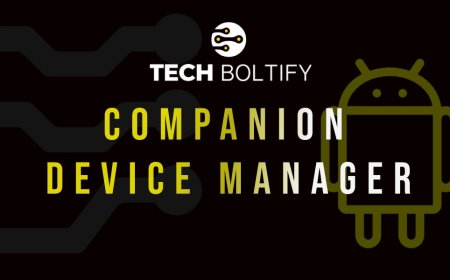How Fire and Security Systems Are Evolving with Smart Technology
Discover how smart technology is revolutionising modern fire and security systems—offering faster detection, real-time alerts, and remote control to protect people and property like never before.
In a world where technology is deeply embedded in daily life, safety and security systems have also begun to evolve. No longer confined to basic alarms or manually monitored CCTV cameras, modern fire and security solutions are becoming intelligent, automated, and interconnected. For homes, commercial buildings, and industrial sites, these systems are now designed to prevent incidents before they occurnot just respond to them afterward. The rise of smart technology is transforming how risks are detected, how alerts are delivered, and how environments are secured. If you're considering a new safety setup or simply aiming to understand how the industry is changing, this article provides a clear view of the current and future landscape of fire and security systems. To understand what modern fire detection looks like in practice, its useful to explore how a reliable fire and security company approaches smart integration across large and small sites. The Transition from Conventional to Intelligent Systems The Problem with Traditional Systems For decades, fire and security systems operated on a reactive model. Smoke detectors triggered alarms only after significant smoke buildup. Security cameras required manual monitoring or were reviewed after an incident occurred. These setups workedbut they came with serious limitations. Delayed detection, false alarms, and limited control were common issues. Smart Technology Brings Proactive Protection Smart systems are designed to eliminate these gaps. Using sensors, machine learning algorithms, and real-time data analysis, they offer proactive protection. Systems can detect unusual heat levels, identify suspicious motion, and notify users within seconds. In many cases, threats are intercepted before they escalate, making environments not just safer, but also more manageable. Key Innovations in Modern Fire and Security Systems Artificial Intelligence in Surveillance Todays surveillance cameras do more than record. AI-enabled systems can: Recognize faces and license plates Detect loitering or trespassing Differentiate between humans, animals, and vehicles Trigger alerts for predefined behaviour or entry attempts This level of intelligence reduces reliance on manual monitoring and improves overall response time. Intelligent Fire Detection and Alarm Systems Modern fire alarms are equipped with multi-criteria sensors that detect: Smoke particles Heat rise Carbon monoxide Rate-of-rise in temperature These sensors are more accurate and significantly reduce false positives caused by dust, steam, or cooking smoke. Many smart fire alarm systems also integrate with building management systems to automatically unlock doors, activate sprinklers, or shut down HVAC units when a threat is detected. Mobile and Remote Access Control One of the biggest advancements is remote system management. Users can: Arm or disarm alarms View live CCTV feeds Receive push notifications and reports Run diagnostics and health checks All from their smartphone or desktop, making real-time control possible from anywhere in the world. Integration with IoT and Building Automation Smart systems now connect seamlessly with other components of modern buildings. Fire and security devices can work in harmony with: Lighting systems Access control panels Energy management tools Emergency response plans For instance, in the event of a fire, exit routes can be illuminated, lifts can be disabled, and ventilation can be cut off automaticallyall coordinated through a central system. Why This Evolution Matters Reduced Human Error Automated alerts and AI analysis mean fewer mistakes. Smart systems are programmed to spot inconsistencies faster than the human eye or ear. Faster Response Times When integrated with emergency services or monitoring centres, smart systems can automatically notify first responders, reducing delays and minimizing damage. Lower Operating Costs Over Time Though initial setup may require investment, modern systems typically reduce the need for full-time on-site monitoring staff, lower insurance premiums, and help avoid costly incidents. Enhanced Compliance Staying compliant with fire safety regulations and building codes is simpler with smart systems that maintain logs, send reminders for maintenance, and generate compliance reports. Trust, Experience, and Expertise: The Human Factor Still Matters No matter how advanced technology becomes, it must be implemented by those who understand its risks and responsibilities. Partnering with a professional fire and security company is essential to ensure that systems are installed properly, tested regularly, and maintained with precision. A knowledgeable service provider will guide property owners through: System design and configuration Legal and insurance compliance Staff training Ongoing system upgrades and testing For example, in commercial buildings, an experienced fire and security company will not only install alarms but also ensure the layout adheres to fire zoning laws and provides detailed evacuation paths based on occupancy and building layout. Future Trends in Fire and Security Technology Predictive Analytics and Machine Learning Using past data and environmental inputs, future systems will predict potential threats before they emerge. This includes identifying electrical systems likely to overheat or recognizing repeated entry attempts at restricted access points. Wireless and Battery-Free Sensors Improvements in low-power devices and energy harvesting may allow sensors to run without traditional batteries, reducing maintenance and improving system uptime. Smart Drones and Robotics In larger facilities, mobile surveillance using autonomous drones or robotic sentries could offer constant patrolling with live video feedback and dynamic tracking capabilities. Enhanced Data Privacy and Cybersecurity As more devices become internet-connected, protecting them from cyber threats will become as important as protecting against physical ones. Encrypted communication and secure cloud-based infrastructure will play a key role. Conclusion: The evolution of fire and security systems is not a passing phaseit reflects a broader shift in how we approach risk and safety in a fast-paced, technology-driven world. Smart systems do more than alert; they analyze, adapt, and actoften before humans are even aware of a problem. As these technologies continue to develop, they offer a powerful blend of prevention, protection, and precision. Investing in smart fire and security systems today is more than an upgradeit's a commitment to a safer, smarter, and more secure future. If you're planning to assess or enhance the security of your property, understanding the latest smart innovations is the first step. Working with professionals ensures these systems are implemented effectivelyso theyre ready when it matters most. Conclusion: The evolution of fire and security systems is not a passing phaseit reflects a broader shift in how we approach risk and safety in a fast-paced, technology-driven world. Smart systems do more than alert; they analyze, adapt, and actoften before humans are even aware of a problem. As these technologies continue to develop, they offer a powerful blend of prevention, protection, and precision. Investing in smart fire and security systems today is more than an upgradeit's a commitment to a safer, smarter, and more secure future. If you're planning to assess or enhance the security of your property, understanding the latest smart innovations is the first step. Working with professionals ensures these systems are implemented effectivelyso theyre ready when it matters most. Frequently Asked Questions (FAQs) What makes a fire and security system "smart"? A smart system uses automation, data analytics, and remote access to provide real-time protection. Unlike traditional setups, smart systems can learn patterns, reduce false alarms, and respond instantly to risks. Is it worth upgrading to a smart system if I already have a traditional one? Yes. Modern systems offer higher reliability, better coverage, and enhanced control. They also align better with updated fire safety laws and insurance requirements. Can smart fire systems integrate with older building infrastructure? In many cases, yes. Hybrid systems are designed to integrate with both legacy components and newer technologies. A professional audit can determine the best approach. How often should smart systems be maintained? Regular maintenancetypically every 6 to 12 monthsis essential. Automated diagnostics help detect issues early, but manual checks ensure compliance and continued performance.








































